Spontaneous hair cell regeneration in the neonatal mouse cochlea in vivo
- PMID: 24496619
- PMCID: PMC3912828
- DOI: 10.1242/dev.103036
Spontaneous hair cell regeneration in the neonatal mouse cochlea in vivo
Erratum in
- Development. 2014 Apr;141(7):1599. Rubel, Edwin W [added]
Abstract
Loss of cochlear hair cells in mammals is currently believed to be permanent, resulting in hearing impairment that affects more than 10% of the population. Here, we developed two genetic strategies to ablate neonatal mouse cochlear hair cells in vivo. Both Pou4f3(DTR/+) and Atoh1-CreER™; ROSA26(DTA/+) alleles allowed selective and inducible hair cell ablation. After hair cell loss was induced at birth, we observed spontaneous regeneration of hair cells. Fate-mapping experiments demonstrated that neighboring supporting cells acquired a hair cell fate, which increased in a basal to apical gradient, averaging over 120 regenerated hair cells per cochlea. The normally mitotically quiescent supporting cells proliferated after hair cell ablation. Concurrent fate mapping and labeling with mitotic tracers showed that regenerated hair cells were derived by both mitotic regeneration and direct transdifferentiation. Over time, regenerated hair cells followed a similar pattern of maturation to normal hair cell development, including the expression of prestin, a terminal differentiation marker of outer hair cells, although many new hair cells eventually died. Hair cell regeneration did not occur when ablation was induced at one week of age. Our findings demonstrate that the neonatal mouse cochlea is capable of spontaneous hair cell regeneration after damage in vivo. Thus, future studies on the neonatal cochlea might shed light on the competence of supporting cells to regenerate hair cells and on the factors that promote the survival of newly regenerated hair cells.
Keywords: Atoh1; Diphtheria toxin; Direct transdifferentiation; Fate mapping; Lgr5; Mitotic regeneration.
Figures

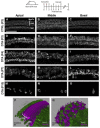
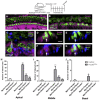
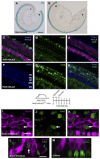
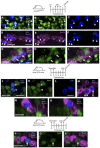

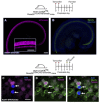
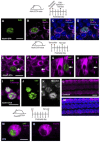
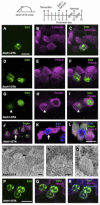
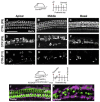
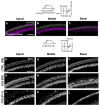
References
-
- Abrahamsen B., Zhao J., Asante C. O., Cendan C. M., Marsh S., Martinez-Barbera J. P., Nassar M. A., Dickenson A. H., Wood J. N. (2008). The cell and molecular basis of mechanical, cold, and inflammatory pain. Science 321, 702–705 - PubMed
-
- Adler H. J., Raphael Y. (1996). New hair cells arise from supporting cell conversion in the acoustically damaged chick inner ear. Neurosci. Lett. 205, 17–20 - PubMed
-
- Alberts B., Johnson A., Lewis J., Raff M., Roberts K., Walter P. (2002). Molecular Biology of the Cell. New York, NJ: Garland Science;
-
- Baird R. A., Steyger P. S., Schuff N. R. (1996). Mitotic and nonmitotic hair cell regeneration in the bullfrog vestibular otolith organs. Ann. N. Y. Acad. Sci. 781, 59–70 - PubMed
Publication types
MeSH terms
Substances
Grants and funding
- R01 DC006471/DC/NIDCD NIH HHS/United States
- DC011043/DC/NIDCD NIH HHS/United States
- R21 DC008800/DC/NIDCD NIH HHS/United States
- K08 DC011043/DC/NIDCD NIH HHS/United States
- DC009393/DC/NIDCD NIH HHS/United States
- P30DC010363/DC/NIDCD NIH HHS/United States
- F31 DC009393/DC/NIDCD NIH HHS/United States
- P30 DC010363/DC/NIDCD NIH HHS/United States
- CA21765/CA/NCI NIH HHS/United States
- DC006471/DC/NIDCD NIH HHS/United States
- P30 CA021765/CA/NCI NIH HHS/United States
- DC010310/DC/NIDCD NIH HHS/United States
- F32 DC010310/DC/NIDCD NIH HHS/United States
- DC008800/DC/NIDCD NIH HHS/United States
LinkOut - more resources
Full Text Sources
Other Literature Sources
Molecular Biology Databases

